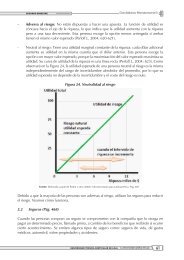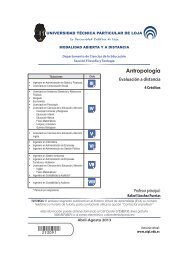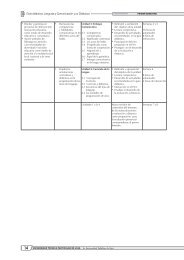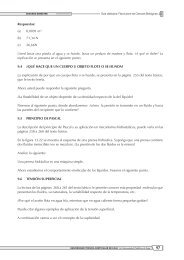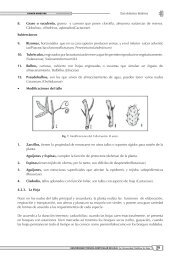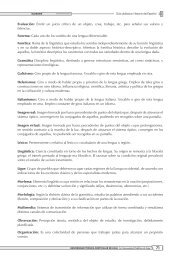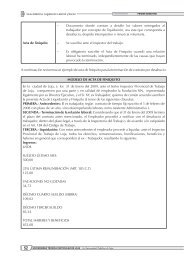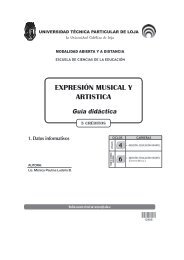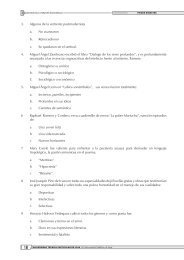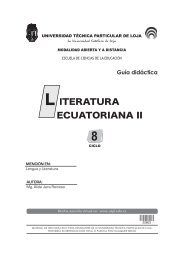Communicative Grammar III - Bad Request - Universidad Técnica ...
Communicative Grammar III - Bad Request - Universidad Técnica ...
Communicative Grammar III - Bad Request - Universidad Técnica ...
You also want an ePaper? Increase the reach of your titles
YUMPU automatically turns print PDFs into web optimized ePapers that Google loves.
Guía didáctica: <strong>Communicative</strong> <strong>Grammar</strong> <strong>III</strong><br />
Once you go through the information in “<strong>Grammar</strong> Notes you can check your understanding of what<br />
you have read in “<strong>Grammar</strong> Notes” by doing the exercises in the sections “Focused Practice” and<br />
“Communication Practice” in your textbook. These activities will be very useful as they are a preparation<br />
for the on-site exams.<br />
Let’s continue with modals of advice.<br />
3.4. Advice: Should, Ought to, Had better<br />
You will begin this part of your textbook with a comprehensive reading of an interesting article about<br />
being polite on the Internet. Additionally, you have a list of cyberwords with their meanings that will<br />
help you understand the article called “Netiquette 101.”<br />
I also suggest you check your understanding by answering the following questions:<br />
Exercise:<br />
What kind of advice does the article give?<br />
_______________________________________________________________<br />
What should you do before posting your own ideas?<br />
_______________________________________________________________<br />
Why shouldn’t you use capital letters?<br />
_______________________________________________________________<br />
Why should you count to ten before replying to a message that made you angry?<br />
_______________________________________________________________<br />
What do emoticons show?<br />
_______________________________________________________________<br />
Why shouldn’t you use your real name on the Internet?<br />
_______________________________________________________________<br />
After completing the exercise above, look at the charts in the section “<strong>Grammar</strong> Presentation”. You will<br />
see the structure of statements, yes/no questions, short answers and Wh- questions using the modals<br />
should, ought to, and had better. This chart is useful to start reading the section “<strong>Grammar</strong> Notes” in<br />
which you will learn about ways to give and ask for advice.<br />
I hope these modals are easy to understand. Now you can begin to work on the sections “Focused<br />
Practice” and “Communication Practice” in your textbook.<br />
Once you understand the use of these modals of advice you can move on to the next point about modals<br />
and expressions of suggestion.<br />
UNIVERSIDAD TÉCNICA PARTICULAR DE LOJA La <strong>Universidad</strong> Católica de Loja 30



